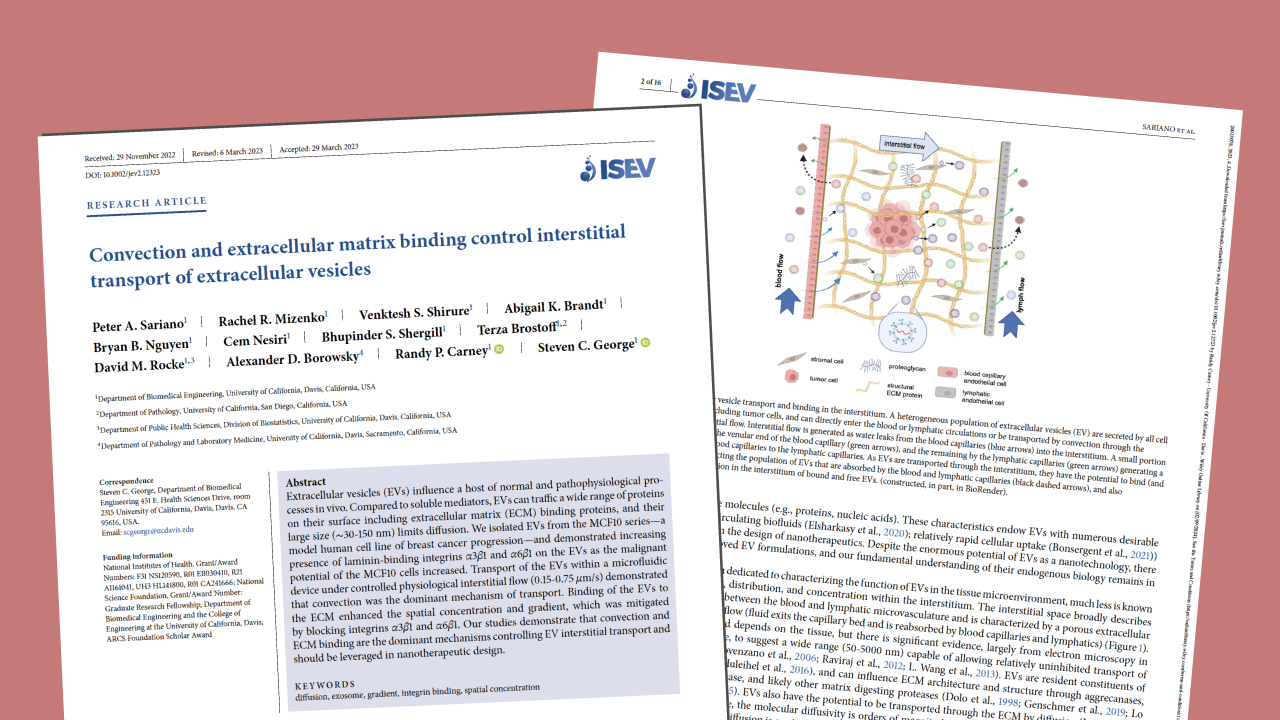
New Research: How Convection Drives the Spread of Extracellular Vesicles in Breast Cancer
Journal of Extracellular Vesicles
Our study titled: "Convection and extracellular matrix binding control interstitial transport of extracellular vesicles" is now online in the Journal of Extracellular Vesicles.
This research highlights that convection, the movement of fluids driven by pressure or flow, is the primary way extracellular vesicles (EVs) are transported within tissues. The study found that EVs from more aggressive breast cancer cells are better at sticking to surrounding tissues due to specific proteins on their surface. This sticking ability, combined with the convective flow in tissues, increases the concentration of EVs in certain areas, potentially influencing disease progression and offering insights for developing targeted cancer therapies.
This was a nice collaborative effort by our team, with Rachel Mizenko working together with George Lab graduate student Pete Sariano to unravel this interesting story.
Download the pdf of the manuscript directly here: